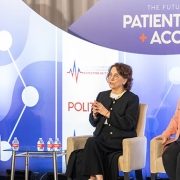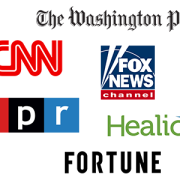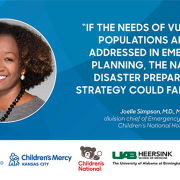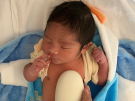Q&A with Dr. Goyal: Trailblazing equity work leads to election to ASCI

Monika Goyal, M.D., MSCE, associate division chief of Emergency Medicine and Trauma Services
Monika Goyal, M.D., MSCE, associate division chief of Emergency Medicine and Trauma Services, is joining The American Society for Clinical Investigation (ASCI), one of a small cadre of pediatric emergency medicine physicians elected to the premier medical honor society for physician-scientists. Dr. Goyal considers her new honor a pivotal opportunity to represent pediatric emergency medicine, which is often underrepresented in research.
Interim Chief Academic Officer Catherine Bollard, M.D., M.B.Ch.B., nominated Dr. Goyal to ASCI because of her nationally renowned work as an equity science scholar, having published more than 130 peer-reviewed manuscripts and securing more than $25 million in funding from the National Institutes of Health (NIH). “From the very beginning of her career, Dr. Goyal has been a trailblazer as it relates to her research interests,” said Dr. Bollard, also an ASCI member.
Dr. Goyal serves as the inaugural chair for Women in Science and Medicine and associate division chief for Academic Affairs and Research at Children’s National Hospital. Her academic work has focused on disparities in the emergency setting, where she has studied the impacts of gun violence, pain management, sexual health and more. In 2023, the journal Pediatrics named a Children’s National manuscript on gun violence one of the 12 most significant papers in its 75-year history. Dr. Goyal was the first author and remains tremendously proud of the impact science can make on society.
Q: How did you find yourself investigating the science of gun laws?
A: A half-dozen years ago, three other pediatric emergency medicine physicians and I had been caring for countless numbers of children who had been victims of gun violence and felt motivated to act. I started SAFER at Children’s National – Safer through Advocacy, Firearm, Education and Research – which is now an institution-wide initiative to address gun violence within our community and beyond. More than 50 individuals at Children’s National are now active in our organization.
We’ve been able to publish a lot of research in this area, including our national study looking at the association between the strictness of gun laws with firearm-related deaths in children. We found that children are more likely to die from gun violence in states with less strict gun laws. It’s not surprising, yet the recognition by the American Academy of Pediatrics demonstrates the importance of using science to understand this, and it shows how far we’ve come in the medical community. Until recently, this issue has been under-recognized and under-supported, despite it being a massive public health crisis for our children and our country.
Q: Given the pace of emergency medicine, how did you find your way to research?
A: Early in my career, much of my work focused on adolescent sexual health. I kept finding that there was racial bias in terms of who we considered to be at risk for sexually transmitted infections. This finding then motivated me to investigate and understand whether racial bias impacted other aspects of care delivery across various clinical conditions in the Emergency Department.
I started by looking at whether differences existed in pain management based on a patient’s race. In evaluating data on children nationwide who are diagnosed with appendicitis, we found that Black children are less likely to receive appropriate pain management compared to white children, even after we adjusted for pain score and illness severity. We have found similar themes with respect to pain management among children diagnosed with fractures.
Q: What can be done?
A: We are grateful to have been awarded additional NIH funding to develop and test interventions to mitigate inequities. Currently, we are studying the impact of audit and feedback through the provision of what we are calling ‘equity report cards’ and clinical decision support embedded in the electronic health record to improve racial, ethnic and language equity in pain management.
Hundreds of studies have demonstrated that this is an issue at hospitals across the country. I am proud of Children’s National for having the humility for this self-reflection and the courage to do something about it. Our work here is helping to inform efforts across the country, and I am proud of our institution’s leadership in advancing health equity through community-informed, evidence-based interventions.











